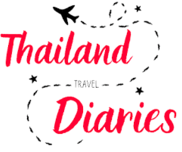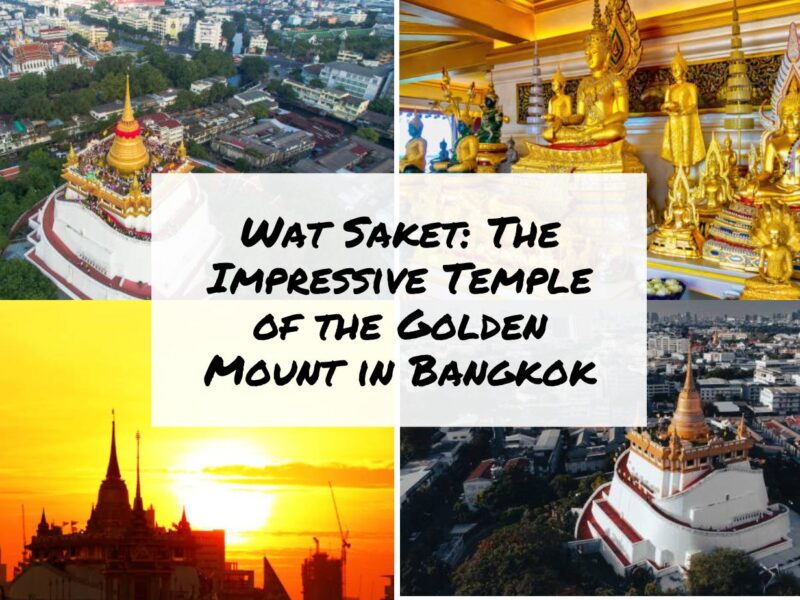The Buddhist rituals that are practiced in Thailand are essential to grasp the culture of the nation. For this reason, we are going to spend some time today discussing the Buddhist rites that are observed with the greatest fervor in Thailand. Some of them include going out on dates or attending particular events and having a more social tone. While other events happen in people’s personal lives or at places of worship. In any event, Buddhist rituals are passionately practiced by laypeople as well as monks since they are considered an integral element of Buddhist life. You will get to experience all of the diversity available, from the most joyous to the most solemn, such as the Buddhist rites performed at funerals.
Songkran or Water Festival
The 13th of April, the middle of the warmest season, marks the beginning of the Thai New Year celebrations. This Buddhist ceremony has its roots in Hinduism and can continue anywhere from three to seven days. It begins with ritualistic food offerings and bathing practices. Nevertheless, the celebration comes to an end with everyone getting angry and hurling water at one another. In point of fact, it makes reference to the concept of cleaning and renovating. But also with delight, because it is like returning to childhood and getting to play with cold water on a day when the temperature is really high.
Phuet Mongkhon, or Buddhist plant blessing ritual
At the beginning of May, the Grand Palace in Bangkok hosts a ceremony honoring the yearly agricultural production cycle. This ceremony takes place in a ritual. Although it has roots in Hinduism, King Mongkut is credited with giving it a Buddhist interpretation. During the ceremony, the monks chant hymns to bestow the plants’ blessings and ensure a successful harvest.
Buddhist death rituals
Funerals and cremations are two of the most prevalent Buddhist rites of passage that Thai people practice at places of worship. Death rites are given a great deal of respect, particularly in more remote places. For instance, there is traditionally a person who walks in front of the funeral procession waving a white flag and leading the mourners in singing. After everything is in place, a piece of paper with phrases from religious literature is inserted into the mouth of the body. After that, the body is cleaned and either placed in a casket or laid out on a pile of wood, accompanied by floral offerings, candles, and incense. After that, tea is served to the monks, and the funeral rituals continue.
Visakha Bucha, a very old festival
A national holiday is observed on the night of the full moon of the sixth lunar month, typically in May or June of each year. A ceremony is performed in Buddhism to pay respect to the significance of the Buddha’s teachings and the influence his principles have on society and the spiritual world. In addition to this, it dates back to the Sukhotai era, which makes it a very old artefact. On this day, Thai people traditionally wear white clothing and pay their respects at temples.
Atthami Bucha
On the eighth day of the waning moon of the sixth lunar month, this Buddhist ceremony is performed (end of June). It commemorates the day that Buddha’s corpse was cremated and thrown into the fire. Although it is not recognized as a national holiday, celebrations of it are becoming less common. The relics of the Buddha are the subject of the sermon that is given at this ceremony.
Asahna Bucha
The festivities take place in honour of the full moon that occurs during the eighth lunar month, which typically falls at the end of July. This event is held to commemorate the day that Buddha, after achieving enlightenment, delivered the first sermon he ever presented on him. Within its pages, Jesus communicated the fundamental tenets of the ideology to his initial disciples. “Setting the wheel of dharma in motion” is the name given to this particular speech. It presents the Buddhist doctrine of the four noble truths. Since 1958, this day has been recognised as a holiday at the national level.
Khao Phansa
This ceremony takes place on the first day of the waning moon of the eighth lunar month (end of July). It is assumed that the monks will begin their retreat inside the temple when the rainy season begins (3 months). The laity is responsible for the first half of the ceremony, which begins with the giving of food, a “rain cloth,” and a huge candle. In addition, the novices are given their ordinations at this period. Even though there are also members of the general public who join them in study and meditation. In a same manner, the monks engage in acts of mutual forgiveness in order to maintain peace despite their solitary imprisonment. It is considered to be the third most important Buddhist ceremony in Thailand.
Kathin
During the month of October, which is the final month of the rainy season, a Buddhist ritual is held. After that, the monks show off a garment that they sewed together out of various pieces of textile scraps. After that, there is a vote, and the robe is presented to the monk who has been practising the longest. The entire process takes place over the course of one day and involves the participation of all of the monks. Above all else, this is the essence of what it means to be a Kathin: to live in peace with one another and to assist one another. In addition, laypeople have an active role in the Kathin. In point of fact, worshippers travel to the temples during the Kathin, which has evolved into a significant festival, in order to witness the presentation of the robes.
Loy Krathong, one of the most beautiful Buddhist rituals
This event is held on the day that coincides with the full moon of the 12th month of the lunar calendar, which falls on a day in the month of November on the Gregorian calendar. People put flowers, candles, and incense sticks in little baskets and float them down rivers and canals after the water level has risen to that point. Mae Khongkha is a Thai deity with Hindu roots, and this ceremony is performed in her honour. Despite the fact that the yearly celebrations of a great number of Buddhist temples take place on this day as well, due to the fact that it falls during the harvest season.
Makha Bucha
A Buddhist rite occurs on the night of the full moon in the third lunar month, typically in the month of February. It is recognised as a national holiday and has been done so for the past one hundred years. Remember the gathering where Buddha ordained his first students, and always keep this event in your mind. In general, this is a time for monks and laity to express their gratitude to the Buddha and the legacy that he left behind. In general, people get together in the afternoon to hear sermons, sing religious music, and pray in a communal setting.
In most cases, Buddhists would cremate their own bodies, and the ashes would either be placed in a tiny urn and stored at the chedis of temples, maintained in the home of a close relative of the deceased, or scattered. Cremation is sometimes performed at the time of the funeral, while other times it is postponed until a later date. On the other hand, the verses that are chanted in Buddhist rites of death are presented either by the relatives of the deceased or by the person who has passed away. At other times, they are selected by the monks from the “Abhidhamma,” which is a text written in Pali that everyone is familiar with and that has a significant amount of ceremonial power.
Marriage in Buddhist rituals
The “I do” ritual in Buddhism is often rather short. The liturgy is also subject to alter depending on whether the monks or the couple make the decision. On the other hand, the procedure as a whole can take an afternoon and a morning. To begin, the monks will sing hymns and pray over the river. The monks will then have the couple kneel in front of them as a white rope is used to bind them together as a group. At one end of the rope, a representation of Buddha has been coiled around it.
After the chants have been completed, a shell is used to pour water over the newlyweds and the other guests in attendance. During the time when the water is being spilled, a white flower-decorated rope is wrapped around the bride and groom’s heads and fastened together. After that, the monks will have something to eat and then go, while the guests will remain to continue celebrating the wedding feast.
Rituals of Buddhist monks in Thailand
The daily rounds are one of the most prevalent types of rituals performed by monks. They do this every morning, but instead of wearing sandals, they wrap their tunics into tidy little bundles and make sure their shoulders are covered. People will hand them food as they parade through the town in order of their ranks and with their heads bowed. The monks gratefully accept the food in their bowls, receive it with humility, and then proceed on their journey. In addition to this, they could offer a brief benediction in Pali.
On the other side, the temples are places where the monks are given alms. Additionally, they do it during parties held in private homes or in commercial establishments. For instance, on the anniversary of the school, or on the day when a certain business is having a deal. However, the concept that giving is a manner of gaining merit in order to be blessed constantly serves as the guiding principle behind these ceremonies. Or, in your case, may you have a happy life after this one.
As can be seen, there are Buddhist ceremonies for the passing of a loved one, for the harvest or the rains, for good fortune, for love; the range of possibilities is extensive. In point of fact, the majority of what makes Thai culture so unique is all of these Buddhist rituals and celebrations. As a result, you should not neglect to visit Thailand to witness firsthand how exceptional this feature of Thai culture is.
- My Caffeinated Journey: The Top 8 Best Coffee Shops in Bangkok - September 11, 2023
- My Encounter with Thailand’s Black and White Striped Snakes - September 2, 2023
- The Koh Samui Island Tour - July 24, 2023


